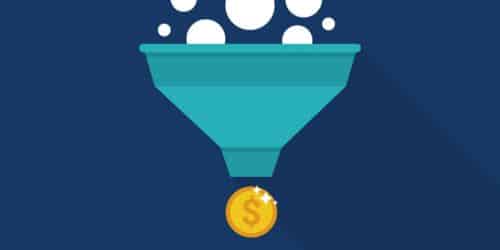Optimizing your sales funnel has become critical in today’s highly competitive business landscape. Sales funnels are a step-by-step guide for potential customers. It starts with awareness and ends with a purchase. Each stage of the funnel is essential for businesses that want to grow their customer base and increase revenue. However, optimizing your sales funnel can be daunting, especially if you’re unsure where to start.
No matter what kind of business person you are, this article will provide valuable insights to help you take your sales funnel to the next level. Explore the different stages of the sales funnel and provide tips on optimizing each one based on the insights shared by industry expert Thomas Peter Maletta.
Stage 1: Awareness
The awareness stage is the first part of the sales funnel. It is crucial for introducing your brand and products to potential customers. The primary objective is to capture their attention and generate interest in your offer. Creating compelling content that resonates with your target audience is essential to optimize this stage. One effective strategy is to conduct market research and gain insights into your customer’s pain points, needs, and preferences. This information can be used to create content that provides value and addresses their concerns. You can leverage different formats like blog posts, social media content, and videos to showcase your expertise and brand personality.
Besides creating valuable content, businesses should consider leveraging paid advertising to increase their reach and target a broader audience. Platforms such as Google Ads, Facebook Ads, and LinkedIn Ads can help you reach potential customers interested in your products or services. By targeting specific demographics, interests, and behaviors, you can increase the effectiveness of your advertising and attract more qualified leads.
Stage 2: Interest
After capturing your audience’s attention, the next stage in the sales funnel is to generate interest in your products or services. This requires building trust and credibility with your audience while highlighting the unique benefits of what you offer. It’s essential to focus on providing value to your audience. This can be achieved through educational content, product demonstrations, or free trials. Your website should be user-friendly, providing a seamless experience for potential customers. It should be easy for them to find information about your products or services and understand how they can benefit.
Another strategy that businesses can use to optimize this stage is to create targeted email campaigns that provide personalized content to their audience. This helps build relationships with potential customers and keeps them engaged with your brand. Create tailored messages that speak directly to their needs and interests using data such as their interests and behaviors. This can increase the likelihood of them becoming loyal customers, increasing sales revenue.
Stage 3: Decision
When potential customers reach the decision stage, they are ready to purchase but may still have doubts or concerns about your product or service. The main objective is to address these concerns and reassure them that your offering is the right choice. Businesses can provide social proof through customer reviews, testimonials, and case studies. This helps to build trust with potential customers and provides evidence that your products or services deliver on their promises.
In addition to social proof, businesses can offer incentives such as discounts, free trials, or guarantees to encourage potential customers to purchase. Making the buying process as easy as possible and ensuring your website is secure and trustworthy is crucial. Doing so can increase the likelihood of a successful sale and turn potential customers into loyal ones.
Stage 4: Retention
The last stage is retention, about keeping your customers happy and returning for more. Repeat customers are essential for businesses as they provide a stable revenue stream and can help to generate referrals. Businesses should focus on providing excellent customer service and ensuring that their products or services continue to deliver value to their customers. Keep in touch with customers effectively through email marketing campaigns, which can provide exclusive offers or new product updates.
In addition to providing excellent customer service and email marketing, businesses should also focus on building a community around their brand. This can be done through social media groups, online forums, or events. By fostering a sense of belonging, businesses can create loyal customers who are invested in their brand and willing to advocate for their products or services. Ultimately, retention is about building solid relationships with customers and providing them with lasting value, which can lead to long-term success for businesses.
Final Thoughts
In today’s competitive marketplace, optimizing every sales funnel stage is essential for businesses to succeed. By capturing the attention of potential customers, generating interest, addressing concerns, and retaining loyal customers, companies can increase their revenue, create referrals, and build a strong brand reputation. Thomas Peter Maletta recommends businesses focus on providing value to their customers, leveraging social proof, and building a community around their brand. By following these strategies, companies can maximize their sales funnel and achieve long-term success in their industry.






